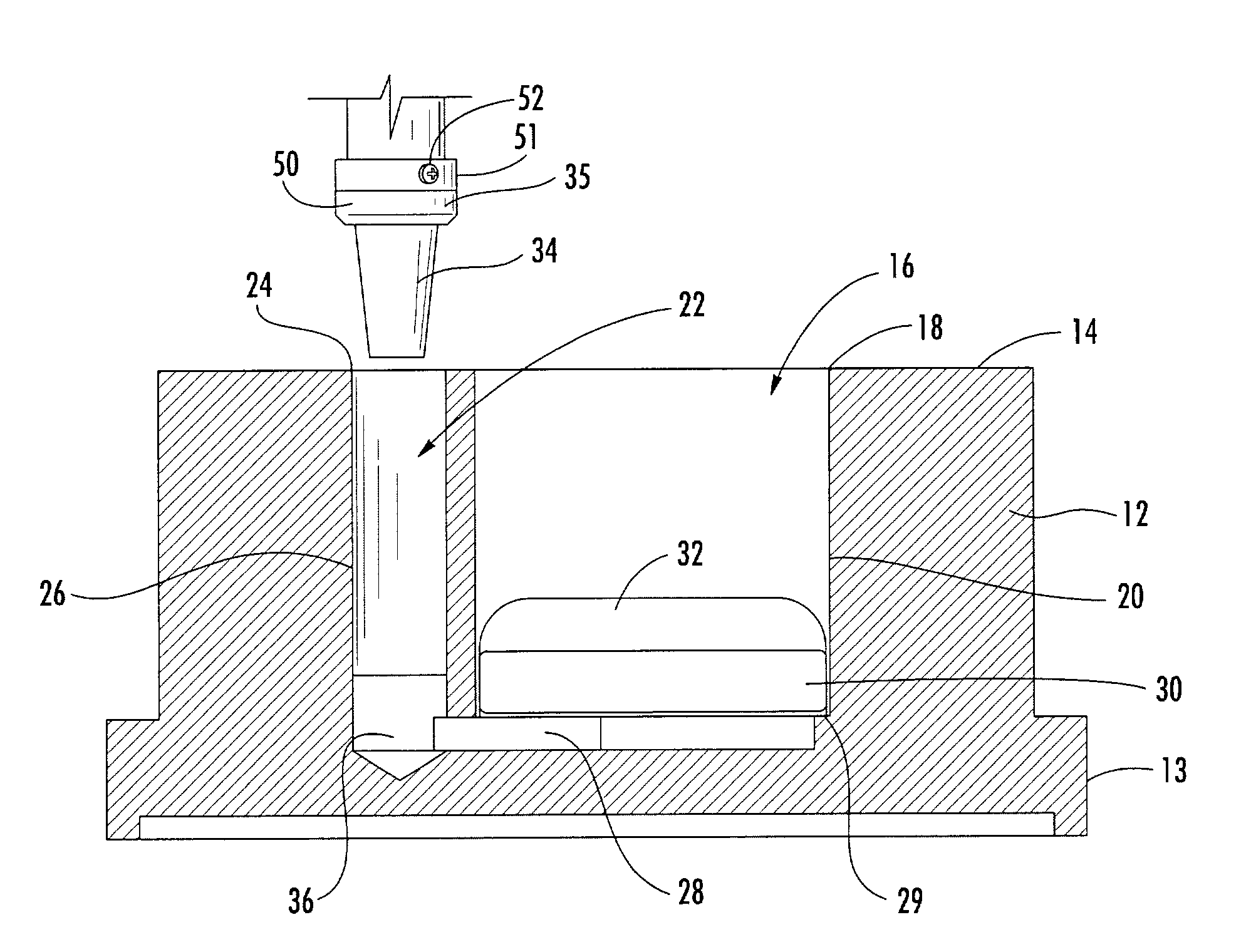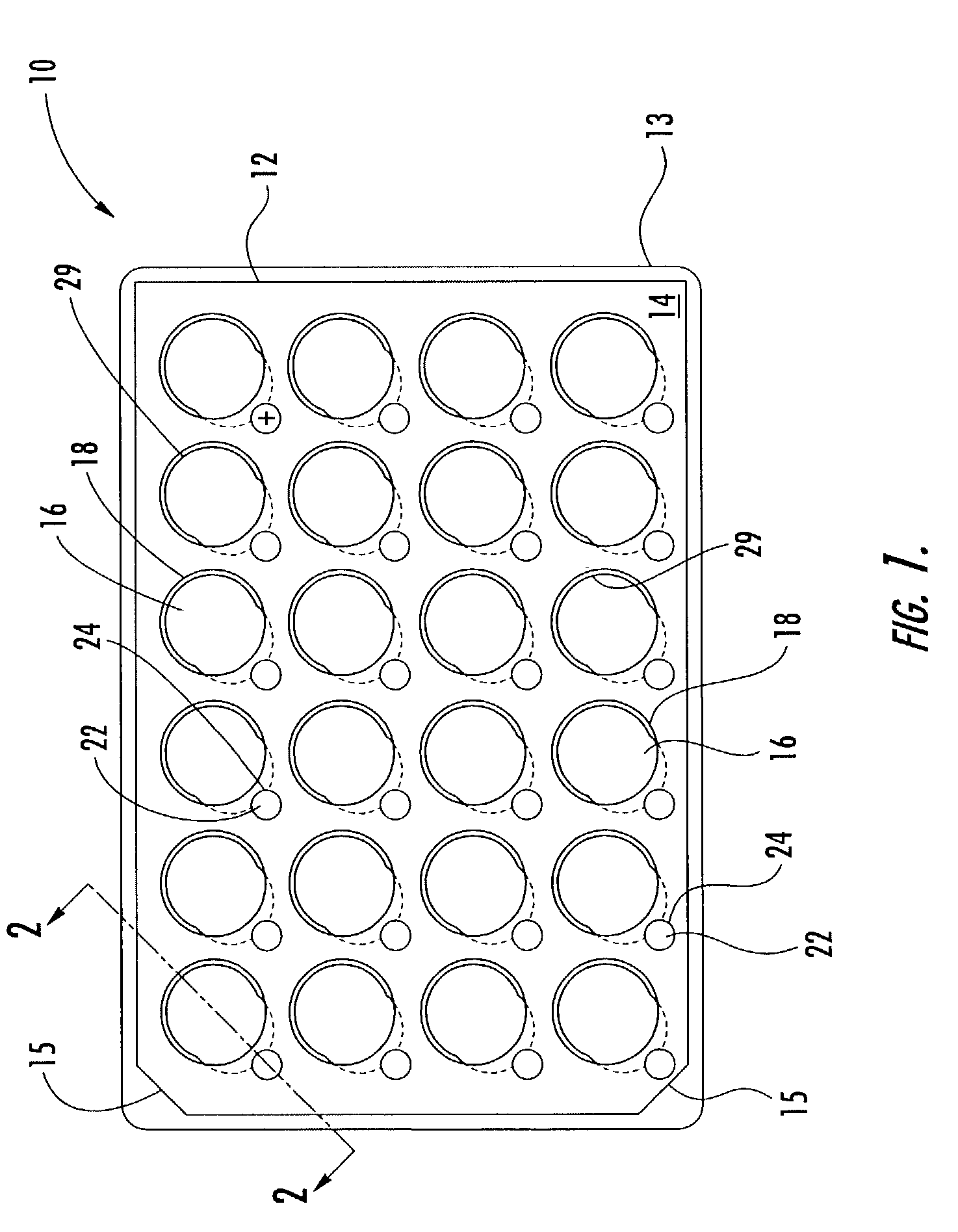Plate and method for high throughput screening
a plate and high throughput technology, applied in the field of plates and methods for promoting tissue growth, can solve the problems of other tissues, reducing the efficiency of screening plant tissue, and consuming plant tissue in an anaerobic environment, so as to reduce workload, promote well-to-well consistency, and reduce the effect of workload
- Summary
- Abstract
- Description
- Claims
- Application Information
AI Technical Summary
Benefits of technology
Problems solved by technology
Method used
Image
Examples
Embodiment Construction
[0024]The present invention now will be described more fully hereinafter with reference to the accompanying drawings, in which preferred embodiments of the invention are shown. This invention may, however, be embodied in many different forms and should not be construed as limited to the embodiments set forth herein; rather, these embodiments are provided so that this disclosure will be thorough and complete, and will fully convey the scope of the invention to those skilled in the art. Like numbers refer to like elements throughout.
[0025]A multiple well plate (MWP) 10 of the present invention includes a body 12 having an upper surface 14. The body 12 defines an array of first holes, or wells 16 and an array of second aspiration holes 22, as shown in FIG. 1. A plurality of channels 28 each connect a respective one of the wells 16 to an adjacent one of the aspiration holes 22, as shown in FIG. 2. In one embodiment, disposed in each of the wells 16 is a porous, hydrophilic frit 30 which...
PUM
| Property | Measurement | Unit |
|---|---|---|
| Pore size | aaaaa | aaaaa |
| Thickness | aaaaa | aaaaa |
| Diameter | aaaaa | aaaaa |
Abstract
Description
Claims
Application Information
 Login to View More
Login to View More - R&D
- Intellectual Property
- Life Sciences
- Materials
- Tech Scout
- Unparalleled Data Quality
- Higher Quality Content
- 60% Fewer Hallucinations
Browse by: Latest US Patents, China's latest patents, Technical Efficacy Thesaurus, Application Domain, Technology Topic, Popular Technical Reports.
© 2025 PatSnap. All rights reserved.Legal|Privacy policy|Modern Slavery Act Transparency Statement|Sitemap|About US| Contact US: help@patsnap.com



